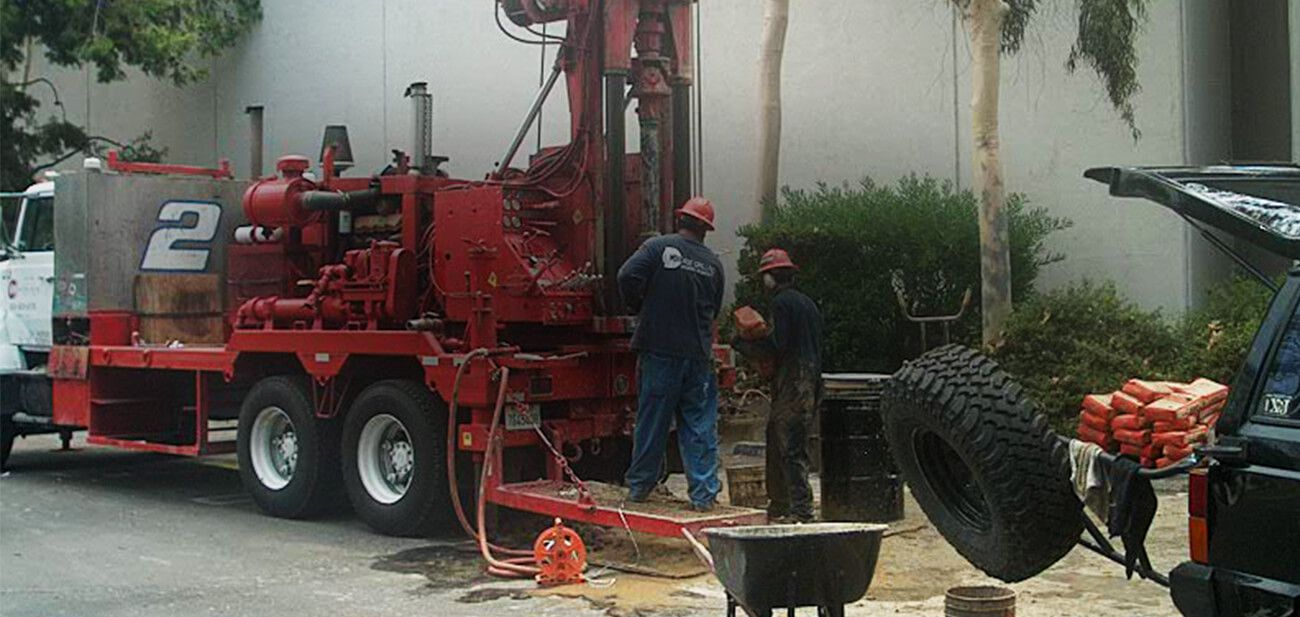The Influence of Geotheta on Improving Soil Security and Structural Stability
Wiki Article
Navigating Geotechnical Providers: The Importance of Geotechnical Reports, Dirt Compaction Testing, and Pavement Style in Ensuring Structural Integrity
Geotechnical services, including the manufacturing of geotechnical records, conducting soil compaction testing, and thorough sidewalk style, offer as the keystone of ensuring structural stability. geotheta. These crucial components not only lay the groundwork for effective task implementation but also reduce prospective dangers that can endanger the security and durability of a construction job.Significance of Geotechnical Reports
Geotechnical reports play a critical role in providing detailed insights into the soil and rock conditions of a website, essential for ensuring the structural integrity of construction projects. These reports are a fundamental part of the initial website investigation process, providing important information that influences the design, building and construction approaches, and total usefulness of a job. By examining soil composition, security, and prospective risks such as landslides or sinkholes, geotechnical reports make it possible for designers to make educated decisions pertaining to foundation style and building methods.Additionally, geotechnical reports aid in risk evaluation and reduction techniques, assisting task stakeholders recognize the potential challenges that may emerge throughout construction. Through detailed assessment and interpretation of geotechnical information, designers can create solutions to deal with site-specific issues, ensuring the long-lasting stability and safety and security of the structure. Inevitably, the thorough nature of geotechnical reports functions as an essential foundation for effective job preparation and execution, minimizing threats and improving total job end results.

Role of Soil Compaction Testing
Exactly how crucial is the assessment of soil compaction through testing for guaranteeing the security and durability of building and construction tasks? Dirt compaction screening plays an essential role in the construction industry by ensuring that the soil beneath a structure is properly compacted to support the intended load and prevent negotiation (geotheta). Effectively compacted soil provides a stable structure for structures, roadways, and other structures, reducing the risk of structural failing and pricey fixings in the futureDirt compaction testing involves measuring the thickness of the dirt and comparing it to the maximum density possible for that certain soil type. If the dirt has actually been compacted sufficiently to sustain the organized structure, this aids designers identify. By conducting dirt compaction tests throughout building and construction, engineers can recognize any kind of areas that require added compaction and take restorative measures prior to proceeding with further building and construction.
Relevance of Sidewalk Style
Examining dirt compaction via screening not just makes certain the security and durability of building jobs however likewise lays an essential structure for reliable sidewalk style. Appropriate pavement style considers elements such as web traffic load, environmental problems, dirt features, and product residential or commercial properties to develop a durable and lasting surface. By incorporating information from dirt compaction tests, engineers can determine the appropriate density, materials, and layering for the pavement to hold up against awaited anxieties and maintain architectural integrity over time.Making Sure Structural Honesty
To make sure the structural stability of construction jobs, geotheta precise focus needs to be paid to factors influencing stability and long-term efficiency. Architectural integrity is essential for the safety and durability of any developed setting. One essential element is the selection of suitable products based on geotechnical reports. These records offer essential info on dirt composition, security, and possible risks, helping in educated decision-making throughout the design and building and construction phases. In addition, performing extensive dirt compaction testing is important to ensure that the dirt beneath foundations or pavements is effectively compacted to support the designated tons and protect against negotiation issues.Additionally, executing robust pavement design practices is important for ensuring the structural integrity of roads, parking area, and other paved surface areas. Appropriate pavement design considers factors such as website traffic quantity, ecological conditions, and soil features to develop long lasting and risk-free transport facilities. By adhering to these techniques and utilizing geotechnical solutions successfully, building tasks can boost their structural integrity, decrease dangers of failure, and ensure the lasting performance of the constructed atmosphere.
Safeguarding Versus Dangers
In light of the crucial relevance positioned on guaranteeing structural stability via thorough attention to material selection and soil testing, securing versus threats comes to be paramount in maintaining the stability and durability of building and construction tasks. Risks in construction projects can stem from various sources, including natural disasters, dirt instability, or design flaws.Furthermore, developing contingency plans and implementing robust monitoring systems can help mitigate unforeseen threats that might emerge throughout building and construction. Routine assessments and quality assurance procedures ought to be performed to ensure that materials are made use of according to specs which building practices follow market requirements. By proactively identifying and resolving possible threats, construction jobs can improve their resilience and minimize the possibility of architectural failures, inevitably making certain the safety and longevity of the built setting.
Conclusion

Dirt compaction screening plays an essential duty in the building and construction industry by guaranteeing that the soil underneath a framework is appropriately compressed to avoid and support the intended load negotiation.Dirt compaction screening includes determining the density of the dirt and contrasting it to the optimum density achievable for that specific soil type (geotheta). By carrying out dirt compaction tests during building and construction, designers can recognize any type of areas that require added compaction and take rehabilitative procedures before continuing with additional building
Additionally, performing thorough dirt compaction testing is essential to make sure that the dirt underneath pavements or structures is appropriately compacted to sustain the designated loads and protect against negotiation issues.
In verdict, geotechnical records, soil compaction testing, and pavement layout play crucial duties in making sure the structural honesty of construction tasks.
Report this wiki page